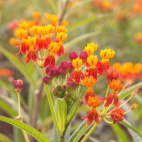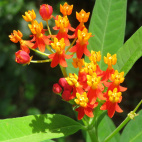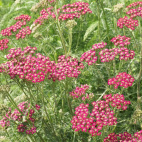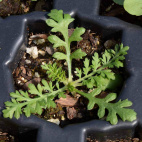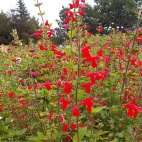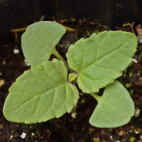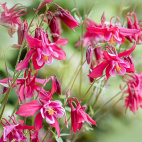Color
Availability
USDA Zone
Region
Type
Duration
Season
Germination
Soil
Sunlight
Height
Use
Narrow Your Search
Color
Availability
USDA Zone
Region
Type
Duration
Season
Germination
Soil
Sunlight
Height
Use
Wildflower Seeds - California Region
The wildflower species listed in the California Region are those that would grow well in the Central Valley as well as the coastal areas of Southern California. If you are in the mountains you might want to check out the Mountain Region, or if you are in the desert areas in the south, you'll want to look at the Dry West Region. The species of bulk wildflowers listed on this page are those that are either native here, or are annuals that grow well in this zone. There are hundreds of bulk California wildflower seeds to choose from, so please use the filters along the left side of the screen to narrow your search to match your soils, lighting, and any other attributes that you may want. If you are looking for something that is strictly native to your immediate area, you can check out the distribution map that is found on the detail pages of most of the species.
-
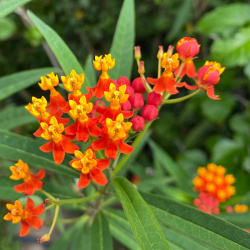 On Sale!
Blood Flower Seeds
Asclepias curassavica
Also known as tropical milkweed, these brilliant red and yellow blossoms explode with color in their first growing season. Although this species is a member of the Milkweed family, recent studies have shown that it actually may be detrimental to the Monarch Butterfly, especially in southern climates where the plants can survive year-round. The plants can harbor diseases that harm the Monarch, and disrupt their normal migratory patterns. Please only use this plant as an annual, and do not let it winter over!Quick Viewx
On Sale!
Blood Flower Seeds
Asclepias curassavica
Also known as tropical milkweed, these brilliant red and yellow blossoms explode with color in their first growing season. Although this species is a member of the Milkweed family, recent studies have shown that it actually may be detrimental to the Monarch Butterfly, especially in southern climates where the plants can survive year-round. The plants can harbor diseases that harm the Monarch, and disrupt their normal migratory patterns. Please only use this plant as an annual, and do not let it winter over!Quick ViewxBlood Flower Seeds
Asclepias curassavica
Also known as tropical milkweed, these brilliant red and yellow blossoms explode with color in their first growing season. Although this species is a member of the Milkweed family, recent studies have shown that it actually may be detrimental to the Monarch Butterfly, especially in southern climates where the plants can survive year-round. The plants can harbor diseases that harm the Monarch, and disrupt their normal migratory patterns. Please only use this plant as an annual, and do not let it winter over!
$3.48 Pkt - $14.49 / Oz -
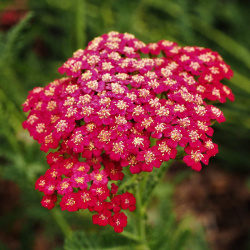 Red Yarrow Seeds
Achillea millefolium rubra
Fragrant foliage and cheerful, long-lasting flowers make this an enduring favorite. Try this variety if you want to add color to a dry area. Yarrow is also valued for its herbal properties.Quick View$3.48 Pkt - $18.77 / Oz
Red Yarrow Seeds
Achillea millefolium rubra
Fragrant foliage and cheerful, long-lasting flowers make this an enduring favorite. Try this variety if you want to add color to a dry area. Yarrow is also valued for its herbal properties.Quick View$3.48 Pkt - $18.77 / Oz -
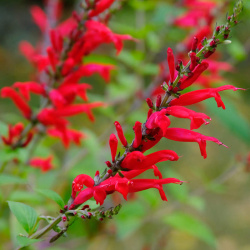 Scarlet Sage Seeds
Salvia coccinea
Ablaze with color, these crimson spikes come from the southern US, but can be grown as an annual in most areas. The hummingbirds love these red tubular flowers, and will be zinging through your garden with delight!Quick View$3.25 Pkt - $11.03 / Oz
Scarlet Sage Seeds
Salvia coccinea
Ablaze with color, these crimson spikes come from the southern US, but can be grown as an annual in most areas. The hummingbirds love these red tubular flowers, and will be zinging through your garden with delight!Quick View$3.25 Pkt - $11.03 / Oz -
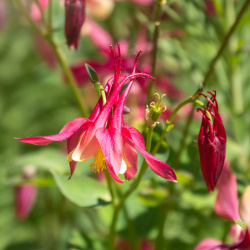 Out Of Stock
Western Columbine Seeds
Aquilegia formosa
Native to the western United States, this perennial showcases crimson and yellow flowers that are similar to the Eastern Columbine. Hummingbirds love these red tubular flowers!Quick Viewx
Out Of Stock
Western Columbine Seeds
Aquilegia formosa
Native to the western United States, this perennial showcases crimson and yellow flowers that are similar to the Eastern Columbine. Hummingbirds love these red tubular flowers!Quick ViewxWestern Columbine Seeds
Aquilegia formosa
Native to the western United States, this perennial showcases crimson and yellow flowers that are similar to the Eastern Columbine. Hummingbirds love these red tubular flowers!
$3.75 Pkt - $84.00 / Oz
The wildflower species listed in the California Region are those that would grow well in the Central Valley as well as the coastal areas of Southern California. If you are in the mountains you might want to check out the Mountain Region, or if you are in the desert areas in the south, you'll want to look at the Dry West Region. The species of bulk wildflowers listed on this page are those that are either native here, or are annuals that grow well in this zone. There are hundreds of bulk California wildflower seeds to choose from, so please use the filters along the left side of the screen to narrow your search to match your soils, lighting, and any other attributes that you may want. If you are looking for something that is strictly native to your immediate area, you can check out the distribution map that is found on the detail pages of most of the species.








